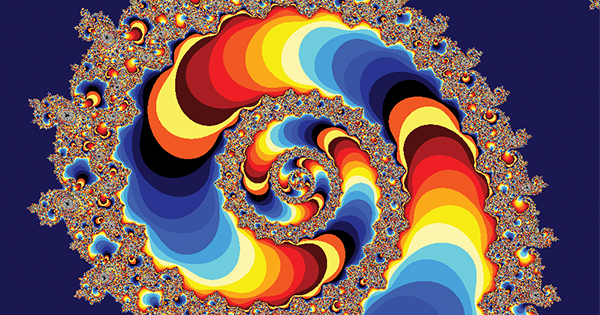
A Beautiful Question: Finding Nature’s Deep Design by Frank Wilczek; Penguin Press, 409 pp., $29.95
Over the years, I’ve read many popular descriptions of general relativity, enough of them to believe that I grasp what Einstein was getting at. But I never imagine that I really understand relativity. What I understand is merely this: here I am again among the familiar words and analogies used to describe relativity. I recognize the rocket ships and passenger trains, the old-fashioned clocks, the distinctive vertigo of four-dimensional space-time, and I know that if I don’t search too hard for the exact meaning of any one sentence, I’ll be delivered safely to the next chapter. I’ve learned to be patient with my incomprehension in hopes of hearing the always surprising news from the far reaches of physics and cosmology.
Incomprehension, after all, is the general reader’s contribution to the scientific writer. Consider Frank Wilczek, the author of A Beautiful Question: Finding Nature’s Deep Design. He’s a gifted expositor and a Nobel-laureate physicist, and yet it’s our incomprehension—our status as readers “not conversant with the mathematical apparatus of theoretical physics,” as Einstein put it—that substantially shapes Wilczek’s argument. If the intended reader of A Beautiful Question were, say, Max Tegmark—Wilczek’s colleague at MIT and author of the recent Our Mathematical Universe: My Quest for the Ultimate Nature of Reality—this would be an entirely different book, less illustrative, less full of wonder. In both books the equal sign (=) is rarer than the exclamation mark (!), which would not be true, I presume, in a dialogue between two working physicists.
Still, there came a moment in A Beautiful Question when I experienced an unexpected phase transformation. Nothing in the prose had changed, neither the texture of the words nor their cadence. There was no sudden irruption of mathematical symbols. I could sense the confidence, the pleasure of the writer, his certainty even about things that were highly uncertain. I could feel Wilczek’s expository zeal and, perhaps best of all, his faith that science unifies not only our understanding of the universe around us but also the way we understand ourselves. Yet in the turning of a page, all comprehension had vanished, more suddenly and more mysteriously than it often does. Usually, I can feel it slipping away. Not so this time.
I mention this because I think it’s going to happen to most general readers of this book. Where it happens will depend on you. For example, Wilczek asks a simple question: “Does the world embody beautiful ideas?” His answer is yes, but long before we come to yes, the meanings of “world,” “embody,” “beautiful,” and “ideas” have changed almost beyond reckoning as Wilczek moves from Platonic and Pythagorean notions of beauty to the ones inherent in quantum chromodynamics. To simplify drastically, one of Wilczek’s main points is that the search for beauty has become an essential tool in modern physics. “Beauty is truth, truth beauty”—this has always sounded like a truism, ever since Keats put those words on paper. Wilczek finds the missing rigor in the equation.
A Beautiful Question is a challenging book, to put it mildly, because it brings us abreast of the most recent, perplexing discoveries in physics and cosmology. As Wilczek describes it, this is a strangely synesthetic realm, where color and motion are versions of each other, where color is a kind of space. This is the realm where fundamental principles—like the notion of asymptotic freedom, for which Wilczek won his Nobel—sound simply backward or upside down. This is a realm that requires, as Wilczek says, new learning and “imaginative growth”—though he never makes a fetish of difficulty.
But this is also an endlessly invigorating book. Wilczek walks in beauty, the beauty of perspective and geometry and atomic musicality but also the beauty of the human mind. His search for analogies is historical, and his use of analogy in explaining advanced concepts is what you might call bidirectional. In other words, when Wilczek uses an analogy, he ends up illuminating the source or origin of the analogy (b in “a is like b”) as much as he does the technical concept he’s hoping to explain. He brings the complementarity and symmetry he expects to find in strong theories of our universe to the task of explanation. He explains, for instance, that “in musical terms, the human visual range spans one octave.” He’s like a man dropping a stone on a beach to demonstrate gravity while giving us, at the same time, a new theory of “stone” and “beach.” He reads the life and equations of physicist James Clerk Maxwell with the avidity of a strong poet reading his strongest predecessors.
The reader plays a unique role in A Beautiful Question, a far grander role than we play in reading almost any other kind of work. It’s not just that we are the anthropos in the anthropic principle, which, in its simplest version, says, “the world must be as it is, in order for me to exist.” (You’ll find this quotation in Wilczek’s immensely useful scientific glossary called “Terms of Art.”) We humans live within a narrowly bounded, fixed horizon of perception and comprehension, beyond which lies an almost unimaginable realm of laws, particles, behaviors, and possibilities—the subjects of this book. To read any general account of theoretical physics—but especially one like A Beautiful Question, which has a profound explanatory purpose—is to find yourself looking into a mirror while wishing desperately that you could see beyond yourself and the mirror that contains your image.
Wilczek’s goal is to guide us beyond ourselves to a place where we can glimpse, in imagination, the “common, world-filling electron fluid.” What leads the reader onward, through the most difficult patches of A Beautiful Question, is knowing, as Wilczek reminds us, that the limits of our understanding are not trivial, not merely a failure of education or intelligence. Those limits, as much as the atomic dust we’re made of, are structural—an infinitesimally small part of the universe we inhabit, which may itself be an infinitesimally small part of the greater possibilities hinted at in the cosmic beauty that Wilczek discerns.



